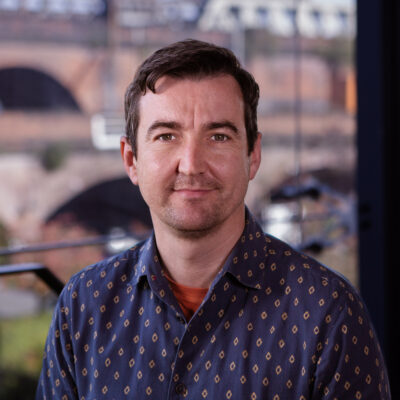Putting behavioural science to work to better understand why organisations do and don’t successfully change.
The Greek philosopher Heraclitus observed around the fifth century BC that change is the only constant in life. Fast-forward 2,500 years and change certainly appears constant within organisations. Yet, we remain less-than-brilliant at instigating, managing and delivering this critical change. The vast majority of change programmes stumble, and not for lack of budget. Instead, the challenge typically lies in not effectively bringing along our employees on the journey. This is ironic since we are – as a species – excellent at adapting to new environments.
So why do we have so much ground still to cover when it comes to delivering successful change programmes? I’d like to make a case for a fundamental barrier and a critical driver for effective change – and explain both through a behavioural science lens.
Barrier to change
Effective organisational change relies on behaviour change, yet most change initiatives steadfastly focus on an organisational process, assuming the required behaviour change will tag along. Marginalising or ignoring the importance of behaviour change is a major barrier to effective organisational change.
Let’s think for a moment about behaviour change outside of organisations – for example, encouraging people to take up regular exercise. Let’s focus on John, who’s not a regular gym-goer. There’s no organisational ‘process’ driving John to start exercising. Instead, it’s a new behaviour that is volitional; in other words, something needs to happen to motivate John to act of his own free will. To understand what might stimulate his motivation, we need to dig a little deeper into John’s decision-making and what may lead John to act.
Although John – like all of us – is excellent at adapting, the truth is he finds the process of change difficult and stressful. Change involves effort, and we all view effort as a cost to be avoided in decisions and behaviours. We only accept these costs when we think the benefits are greater. In other words, we run rough and ready cost-benefit analyses inside our heads to guide our decisions and behaviours.
For John, the costs likely include the physical effort of doing exercise, the need to buy new clothes (financial effort) and the loss of time. Plus, if John thinks he doesn’t know how to exercise effectively, that lack of knowledge, along with the potential loss of confidence and risk of embarrassment, are also costs.
With formal change programmes, the belief is that as employees move through the organisational process, they’ll inevitably buy into the change that is happening. In other words, at some point the benefits will automatically outweigh the costs, and we’ll be motivated to act.
But this isn’t so. What if we never see the benefits of the change outweighing the costs?
The organisational process can push people forward – for example, old software can be switched off, forcing people to use new systems – giving the impression that everyone’s on board. But the $64,000 question remains: would your employees be using the new software if they hadn’t been pushed? If the answer is no, then the change process hasn’t been successful, because while your employees are using the new software, they are probably still wed to their old working patterns, leading to losses in agility, productivity and innovation.
A preoccupation with organisational process obfuscates the importance of understanding and building a motivation to act. Why do we fixate on process rather than motivation? Perhaps because process is seen as easier to build and manage. Behavioural science can help here by helping us identify and grow motivation.
A behavioural science approach to change
John and his exercise regime (or lack thereof) provides us with an important lesson for better organisational change. We need to convince individuals that not only is the change valuable to the organisation, but it’s valuable to them, too. To do this, we need to understand where people are ‘psychologically’ in the change process, rather than where they are ‘practically’, in the eyes of the organisation.
Thinking back to the earlier example about a new software system being introduced, this means that rather than engaging employees as ‘new software users’ (which they all are because of the switch-off), we should start by understanding how motivated they are to use it.
Imagine two seemingly identical users: Peter and Mary. While both are using the software package, Mary may see the benefits of the new system and be keen to learn more about its functionality. Peter, however, hates it and cannot understand why he’s had to make the move. Mary and Peter look identical in terms of where they are in the change process, but their motivation could not be more different.
These different levels of motivation should be the primary driver for how we go about engaging and building an ongoing commitment to the change, through more targeted ‘change triggers’. For Mary, we want to capitalise on her interest and create further opportunities to substitute old behaviours for new (a counterconditioning trigger). This could involve creating new advanced training courses. For Peter, we need to return to making the case for the change (a consciousness-raising trigger) – for example, by returning to core benefits in terms of how he can get his work done more effectively. We could also highlight the costs of not changing (a dramatic relief trigger), focusing on what he’ll potentially miss out on by not making the change – such as compatibility with other software that we know he already values.
We’ve spent time building an organisational change diagnostic tool that identifies employees’ true view of change programmes (their psychological commitment based on perceived costs and benefits), along with a series of ten corresponding change triggers, with revealing results.
In one programme looking to establish new hybrid working patterns across markets and divisions for a multinational professional services firm, we discovered that even though more than half of the workforce were already working in-line with the new hybrid guidance, their cost-benefit analysis scores were strikingly low. This suggested that the more they went back to the office, the less convinced they were of its benefits (to them and to the business). This proved vital in directing the client to not only continue to focus on those who were yet to make the change, but to also redouble efforts to understand what needed to change within the working environment (an environmental re-evaluation trigger) to ensure that those who had made the change continued to recognise the benefits and could advocate to the rest of the business.
When you’re finished changing, you’re finished
Change is constant and difficult – personally and organisationally – but if we approach organisational change the way we approach personal change, we have the opportunity to get there sooner, more smoothly and with less effort applied. Behavioural science tells us that the way to do this is to look beyond a process at the organisational level, to the psychological drivers of motivation at the individual level. This shift in focus has the potential to dramatically reduce costs and increase agility. Ironically, seizing this opportunity to redefine how we deliver organisational change depends on whether, as leaders, we have the motivation to change how we manage change.





